Worlds collide in Teen Titans Go! & DC Super Hero Girls: Mayhem in the Multiverse, the latest crossover between the two DC animated properties. Multiverse stories may be all the rage right now, but it’s old hat for DC Comics. In fact, Teen Titans Go! and DC Super Hero Girls have crossed over various times including last summer’s “Space-cation” special and the recent Exchange Students graphic novel. Fans expecting some epic alternate universe shenanigans may be disappointed that the multiverse and the Teen Titans play only a small but important part of the overall story.
If anything Mayhem in the Multiverse wraps up and puts a nice bow on many dangling plot threads from the second season of DC Super Hero Girls. First announced back in 2018, I’ve made it no secret how much I’ve adored this new take on the DC Super Hero Girls franchise developed by Lauren Faust. Even with Faust’s departure after the first season to pursue other projects, the second season managed to keep up the high quality and continue many of the character and story arcs. While a third season of DC Super Hero Girls has not been officially announced, Mayhem in the Multiverse is a solid finale for the past two seasons while still leaving the door open for potential future stories.
Ahead of the film’s release we had the opportunity to interview screenwriter Jase Ricci, co-director Matt Peters, and producer James Tucker about the development and production of Mayhem in the Multiverse.
Taimur Dar: I wasn’t expecting Mayhem in the Multiverse to actually be the culmination of many plot threads from the second season of DC Super Hero Girls. In fact, the multiverse is just a small part of the story and there’s even a joke about that in the film. How did this project come about?
Jase Ricci: It was an organic process, really. Thank you for noticing by the way. I had continued the storylines that Lauren [Faust] and the team from Season 1 had set up. And I wanted to make sure to do those storylines justice and pay them off in a meaningful way. I had a lot of these stories already written out or planned in my head on how they would go. When they gave us the idea of Teen Titans Go! [we said], “Let’s do it!” The biggest hang-up for me was we knew we wanted to close these stories up. At the time we were writing this [film] two years ago, Teen Titans Go! was just getting ready to do their own crossover where the Super Hero Girls come over. The issue was the way the Teen Titans Go! show works is that you can just have the characters pop up. That’s the world of their story. Our show, not for better or for worse and we make a joke about this in the movie, is a little more adherent to the scope of the world and continuity. There’s already an established Teen Titans called the Tween Titans in the DC Super Hero Girls universe. So it became a question about how we do get these characters together in a way that’s going to be honest to the Teen Titans Go! storytelling without betraying the world of continuity of DC Super Hero Girls. The multiverse was in the zeitgeist and so it seemed natural. That’s how the structure of the story came.
Dar: This is a pretty huge cast of characters. Cartoon productions are always going to have constraints like budget and time hence why although characters like Poison Ivy, Livewire, Katana, and Green Arrow do appear it’s only in non-speaking roles. Were there any characters you had hoped or intended to have dialogue or was it always set?
Ricci: You’re right. It’s a combination of the two things. There are so many great characters and you want to be able to give everybody their moments. The version of Poison Ivy that they developed is one my favorites. It’s funny that you mention that. We did an episode where we did a riff on The Breakfast Club. That was one of the most fun episodes I worked on.
You’re beholden to two different things. The issue of budget is one even though there is some overlap in the cast like Tara Strong. But also just story-wise you have to be economic. You don’t have the space to get some of the secondary and tertiary [characters], and I don’t mean this pejoratively. Blue Beetle was in there but we don’t have time for him. Katana was another one we would have loved to spend time with because I know the fans really liked her and I liked her. We had her in the first episode of Season 2 and we were looking for other opportunities. And then the movie came up. Who knows what her future will be. I wish we could have them all, but you can only focus on what’s best for the whole project.
Dar: Ensemble films can be incredibly difficult to write since you want to try to give your main characters a satisfying arc and give them equal time in the spotlight. I definitely saw that all the Super Hero Girls had some kind of storyline that paid off by the end— Supergirl feeling overshadowed by Superman and confronting Cythonna; Wonder Woman and her doubts as a leader; Batgirl dealing with Harley Quinn; Zatanna and her dark magic.
While Bumblebee and Green Lantern Jessica Cruz aren’t as overt as the others, they both do have their own arcs and opportunities to shine like when Bumblebee rallies the team and Jessica proving her methods of non-violence are possible.
Ricci: Thank you for noticing all that.
Dar: Of course! Was there more you wanted to do with Jessica Cruz and Bumblebee?
Ricci: For sure. And this might still happen in the future. The story never ends and you can always come back to these characters. I feel like exploring the ups and down of pacifism could be very interesting. I’d like to delve more into standing up for yourself and anger management. With Bumblebee, the one thing that I really tried to do was keep the theme of each character’s growth similar. So if their individual plot wasn’t played out the same, you’d still feel that they are all stepping up to be their own heroes. That’s what the story is. It’s about Batgirl stepping out of Batman’s shadow. That’s been her arc and Harley Quinn [is] the same thing. Supergirl is out of Superman’s shadow. Green Lantern is showing that she can fight crime her own way even though it’s small. And Bumblebee is stepping up and showing that she can be a hero that takes control.
Wonder Woman was a challenge because she is perfect. Thematically you have the Justice League and all these other guys failing but you have the DC Super Hero Girls stepping up and becoming their own team. Almost all of these characters, except for Bumblebee are versions of male heroes, even Zatanna. This was about removing those other heroes from the context so they could step out of the shadows and create shadows of their own. Lauren and everyone had done such an amazing job so I mapped it out where they [the characters] could go for a season. We were able to tell a lot of those stories even though we didn’t get to a lot of minutiae. And you’re right about Bumblebee even though we had an episode that addressed that. Collectively we told the story that we wanted to.
Dar: Cythonna, the villain in the film, is a REALLY deep cut even for comic book readers. I’m not ashamed to admit I never heard of the character before this film. Do you recall how you came across Cythonna and the inspiration to use her in Mayhem in the Multiverse?
Ricci: What kind of comic book fan are you who’s never heard of Cythonna?
[Laughter]
Ricci: I’m totally kidding! As I was saying with these characters’ arcs, here are these characters and here is where they have to go. We need a bad guy who can force this change in them. The Legion of Doom is fun and gives the fans the chance to see all the bad guys that we’ve met along the way come together. I’m a huge superhero fan so I love seeing Solomon Grundy and Toyman together with Cheetah. But we needed a real legitimate threat. With Cythonna we kind of did it backwards. Magic is the weakness for Kryptonians like Supergirl and Superman. By having a god who’s kind of magic you’re already sort of putting her [Supergirl] at a disadvantage.
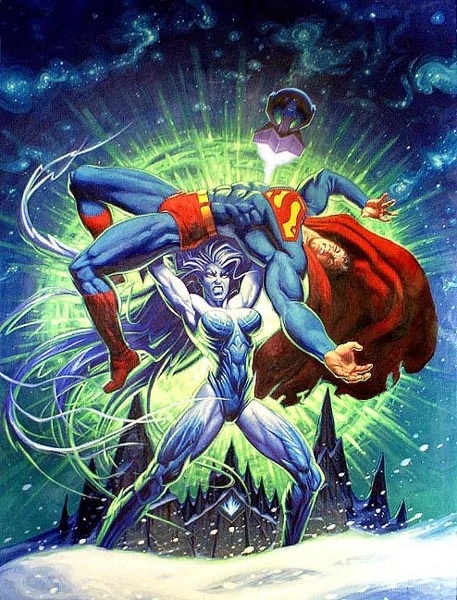
Dar: Lastly, just to confirm are there more episodes coming down the line for this second season or does Mayhem in the Multiverse serve as the season finale?
Ricci: As far as I know this functions as the Season 2 finale.
Taimur Dar: I think it’s safe to say Mayhem in the Multiverse is vastly different than your most recent DC animated projects. While most of the crew like the storyboard artists and designers had worked on the DC Super Hero Girls animated show you’re coming in as an outsider. How did you get involved in this project and was it from the very beginning or later?
Matt Peters: It was actually from the beginning when the movie was getting started. They were looking for directors. I know they were considering Katie [Rice]. They were looking for a co-director on it and so they approached me. There was no guarantee that I would say yes but when I saw the show I always thought the designs were fantastic and it was cute. And I think the show itself was great so I was like, “Yeah, please put me on!”
Dar: When they announced that Lauren Faust was developing this new iteration of DC Super Hero Girls I knew that she would bring the same magic that she brought to the My Little Pony franchise. In fact, at the SDCC 2018 panel they showed footage from the first episode of Wonder Woman pounding Supergirl’s face into the ground and I think that the audience was simultaneously taken aback but delighted. How familiar were you with this version of DC Super Hero Girls before the project and what was your reaction to the show?
Peters: With the DC Super Hero Girls stuff I had only seen a few episodes of the show. When they asked me to get involved that’s when I started watching the show itself. I love both Wonder Woman and Supergirl. You’re going to naturally have those two have a confrontation. They’re both so supercharged. I’m a fan of Superman first and probably my second favorite superhero would be Wonder Woman. It’s almost like I’m watching my two favorite heroes fight. [Laughs]. It was always a fan thing to see those two go at it.
Dar: I remember you said co-directing Apokolips War with Christina Sotta was a blast and a blessing to help manage the massive workload. You’re co-directing Mayhem in the Multiverse with Katie Rice who has been working at Warner Bros. Animation for the last few years like yourself, but it’s primarily been in comedy like Animaniacs. Did you know each other before this project and what was the working relationship like?
Matt Peters: I had not known Katie before. In fact, I still have not met her face-to-face because we did this movie during lockdown. They introduced us both and we were able to talk directly to one another. Right away we felt like there was a good working relationship. As we continued to work on the project we ended up having a lot more fun with one another. By the end of this project, it felt like it was one of the most fun jobs that we ever had. We had a great crew. We had a great script. We had a great property. And I just felt like everyone had a great attitude going in too. Ultimately we ended up just having a ball. With Christina Sotta working on Apokolips War there was so much heavy lifting. I was just grateful to have someone as talented as her to be able to take some stuff off my shoulders and share the load. With Katie it felt more like recess on a playground field. We were able to play with one another.
Dar: In addition to Apokolips War you also directed Injustice, two big ensemble DC animated projects which can be more difficult compared to stories focused on a single character. I’m a big James Gunn fan and he’s said ensemble stories come naturally to him because he comes from a big family. Do you have a preference or inclinations towards ensembles or does it not matter to you?
Peters: It really depends on the story. I don’t necessarily like one over the other. Each of them has a strength that’s really fun to exploit when you’re working on them as a storyteller. One of the things that’s great about DC Super Hero Girls is I really love how the characters interact with one another. They all have a unique personality and mesh really well as friends. My favorite scenes in the film are when they are together as friends and talking with one another. That’s a great thing to explore. Working on the other films, like Constantine: House of Mystery, is an opportunity to do an in-depth look at one particular character which is also a lot of fun. I guess my answer is whichever the one I’m working on is the one I’m having the most fun.
Dar: Just like the DC Super Hero Girls cartoon Mayhem in the Multiverse features great action and comedy, but also heart. There are some wonderful touching scenes like Zatanna and Raven bonding over their mutual struggles with dark magic. Was maintaining heart in addition to action and comedy as equally important to you?
Peters: Always. That’s one of the most important things. It’s kind of mechanical to direct action and even conversation scenes. The real fun in directing for me is to focus on characters when they interact with each other. That scene in particular that you’re talking about is Katie’s scene and she got to direct that. She was really thinking about what those characters are to one another. She always does outstanding performances. I would be able to storyboard things and give it to her and she would always be giving me ways to make the interactions between characters that much more satisfying.
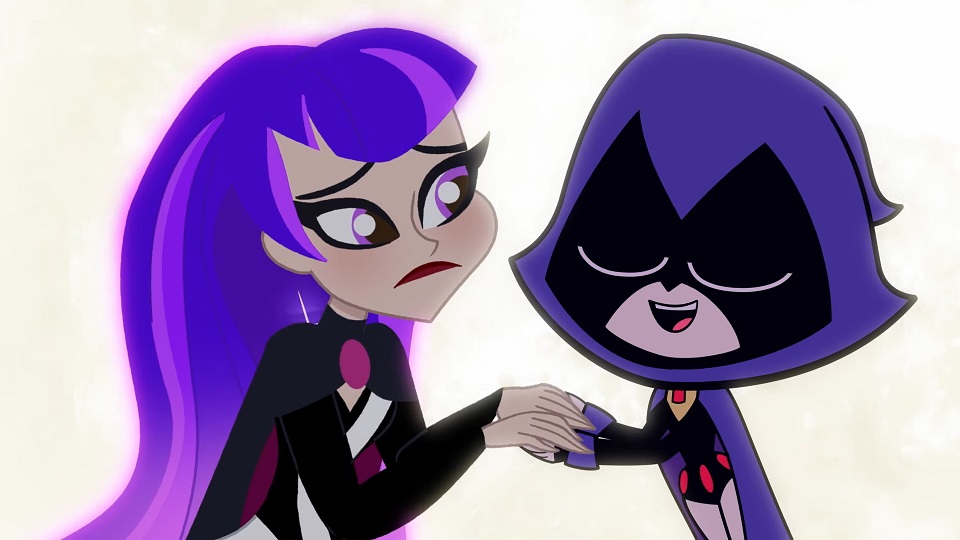
Peters: Almost the same way I split it with Christina Sotta [on Apokolips War]. Basically whenever I’m working with somebody if there’s a Superman scene I pretty much have to have it. More likely than not they just roll their eyes and let me take the Superman stuff so I’ll just shut up. We both focus on the scenes that we have but we don’t lose fact that we’re working together as collaborators. So we will often get one another’s help on different scenes to make them work better if we see an opportunity. Both Katie and I storyboarded on this as well. We have scenes that we did ourselves. Since there were no other directors we would direct one another. I would hand my stuff to her and she’d hand stuff to me. And we would give each other notes. I cherish the ones she gave me. I think I became better at expressions thanks to her.
Dar: On the subject of Superman, there’s a misconception that because he’s considered a boy scout that Superman is bland and boring. This version of Superman in DC Super Hero Girls is definitely more egotistical than people are probably used to but he’s still recognizably Superman. How did you view this take on Superman?
Peters: When I first read it, I’ll be honest, it kind of made me bristle because I feel that Superman is essentially a good and noble character and I didn’t like that he was behaving in a condescending manner to Supergirl. As I continued reading the script and how it evolved, when we got to the scenes that had Superman speaking that way I tried to play it more as the idea that Superman was very concerned and was if anything a helicopter parent.
Dar: I’m sure that scene in the Fortress of Solitude was a blast for you.
Peters: The Fortress of Solitude is always a fun place to go to. It’s always fun to see that alien technology. And I’m always a sucker for Superman robots. It seems kind of silly but I always marveled at those when I was a kid reading those comics that had Superman with an army of robots that worked for him. It was a no-brainer really to get that storyboard handed in and see the humor that was in place and extenuate whenever I could.
Dar: From what I’ve gathered, it seems most in the animation industry agree that working remotely has been fairly smooth sailing and actually beneficial since there’s no wasted time. What has been your experience working remotely for the last two years?
Peters: I think it’s more beneficial, honestly. It feels like artists tend to have a circadian rhythm all their own. There are moments when we are really creative during the day and we can exploit that and get into the workflow. When you don’t have the distractions of an office or a meeting, you can just fully indulge in that thing. Generally speaking, I like to think I’m a good people person but when it comes to art it’s very personal. It’s just me and the paper or the screen that I’m working on. I kind of get lost in that world just playing with it. Not having that distraction by being an office, I end up being able to indulge in it more. I feel like it frees us up to be a whole lot more creatively [to be] on our own. There’s still an interaction with one another because we’re still having meetings and talking. So there’ still a social element that’s involved. Speaking for myself, I feel like working at home is a better way to pull off a project like this.
Dar: As usual, it’s been a pleasure chatting with you Matt. I can’t wait to see whatever your next project will be.
Peters: It’s something with Warner Bros. Animation, I’ll give you that much!
Taimur Dar: You were actually involved as a supervising producer in charge of post-production along with Ben Jones for a few episodes of the first season of DC Super Hero Girls. How does the experience where you just got a small taste of DC Super Hero Girls with just a few episodes compare to working on Mayhem in the Multiverse?
James Tucker: That was an invaluable experience before doing this movie because if they had offered to me cold without me having had that experience I might have turned it down. Or they might not have asked me. Ben was acting as a supervising producer but he had an end date for another project that he had to go do. So they asked me to come in and finish “posting” the last 11-minute minute shorts. Posting means it [the animation] comes back from overseas. It’s been animated and the story is all done but it needs sound effects and ADR for the grunts and groans [as well as] the music and editing. So I supervised the backend and making sure everything looks like it should and calling retakes. It wasn’t like I was involved in the story elements of it. But I got to learn the story by doing the posting. It was great. I loved doing that. It was more relaxing because coming off a movie [Apokolips War] I was really burnt out. I think it saved me to just do the backend stuff.
Dar: I’ve really admired the work of the artists and designers that Lauren Faust brought on when she developed the show.
Tucker: It’s a great crew.
Dar: It’s wonderful to see how the crew has really grown like Kat Hudson who became the lead character designer for the second season and now this project. Were there any artists whose work really impressed you for Mayhem in the Multiverse?
Tucker: With the way post works, I didn’t get to know personally or meet a lot of those artists because some were already gone. They do the pre-production and then they ship it overseas and then it gets animated. In that time they’re either working on the second season or they’ve left to do other stuff. I dealt mainly with the people who directed the episodes and the editors. I knew Kat and her work. We passed each other in the hallways. She was really the only one I got to have any real interaction with as far memory serves. I dealt more with the directors and really only Juston Gordon-Montgomery. The whole pre-production crew I didn’t get to work with them intimately on anything until the movie. Even then they had a director. Francis Giglio was the art director for the movie and he did a wonderful job. All I had to do was glance at stuff and say, “Yeah, that looks good,” which is probably different from my previous experience. Usually on all my projects since I became a solo producer I’ve been the art director which is a lot of work. [There were] a lot of great people on that crew. That show looks beautiful.
Dar: The multiverse has been in the zeitgeist lately like Spider-Man: No Way Home, Everything Everywhere All at Once, and now the new Doctor Strange in the Multiverse of Madness. The multiverse is pretty much the bread and butter of superheroes and you’re no stranger to alternate reality stories. For you what is the appeal of the multiverse?
Tucker: You get to play with characters that wouldn’t be in each other’s stories. There’s potential for redundancy. But we didn’t really have duplicates of the same characters. It was one world crashing into another. So it wasn’t a lot of duplicates except for the Super Friends tag at the end. We’ve been working on this movie since two years ago. It seems like we’re jumping on the bandwagon even though we conceived and created this movie two years ago. I think a little bit goes a long way. For what this project is, it’s just enough multiverse. It’s not overly elaborate. It’s more of a soft crossover.
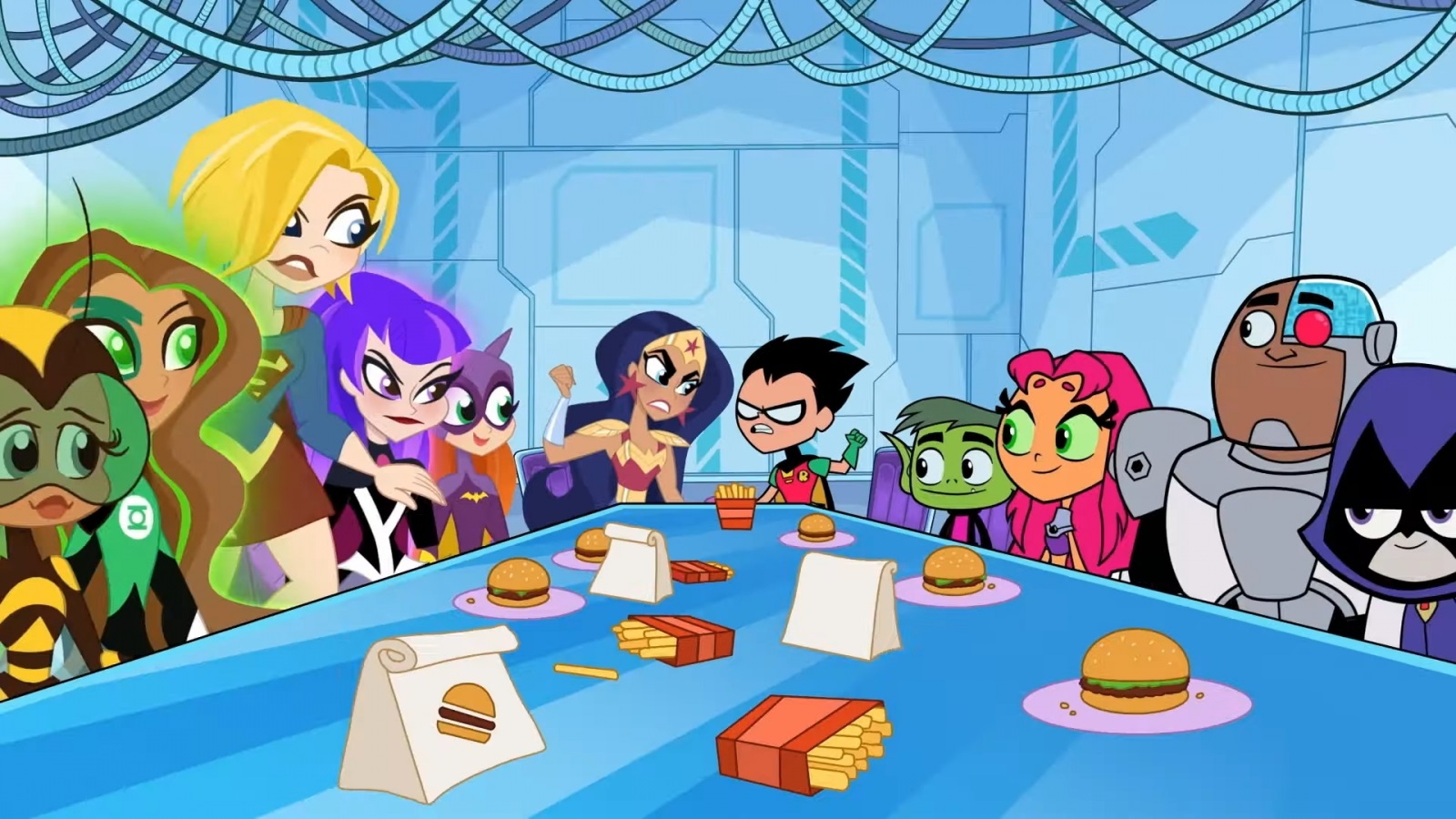
Tucker: Most of the movies that I did were team movies, even Batman. I never did a Batman movie where it was just Batman. I always had Nightwing or Damian or Batgirl. You can count me as someone who likes an ensemble. I love team movies. They’re definitely a bear to work on. I love the dynamism you get. Also some of my favorite shows are ensemble shows like Cheers where the characters bounce off each other. That way you learn more about each individual character than you would if they were just by themselves. Batman: Bad Blood wasn’t initially conceived as a Batman Family movie but I said, “I need more of the Bat Family.” Even with Brave and the Bold that was perfect for me because I would get bored telling solitary stories. I could never work on Samurai Jack for example.
[Laughter]
Dar: The comics industry recently lost two major legends with Neal Adams and George Pérez. I know many like yourself who work on these DC animated projects are enormous comic book fans and readers so I’m curious if Adams and Pérez were comic artists you admired or had an impact on you?
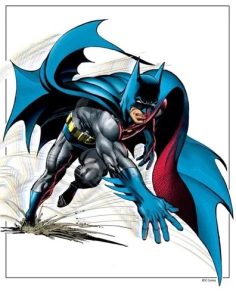
Teen Titans Go! & DC Super Hero Girls: Mayhem in the Multiverse is available Blu-ray Combo Pack, DVD and Digital starting May 24, 2022.
Fans can also catch the movie event on Cartoon Network premiering Saturday, May 28 and then on HBO Max beginning June 28.


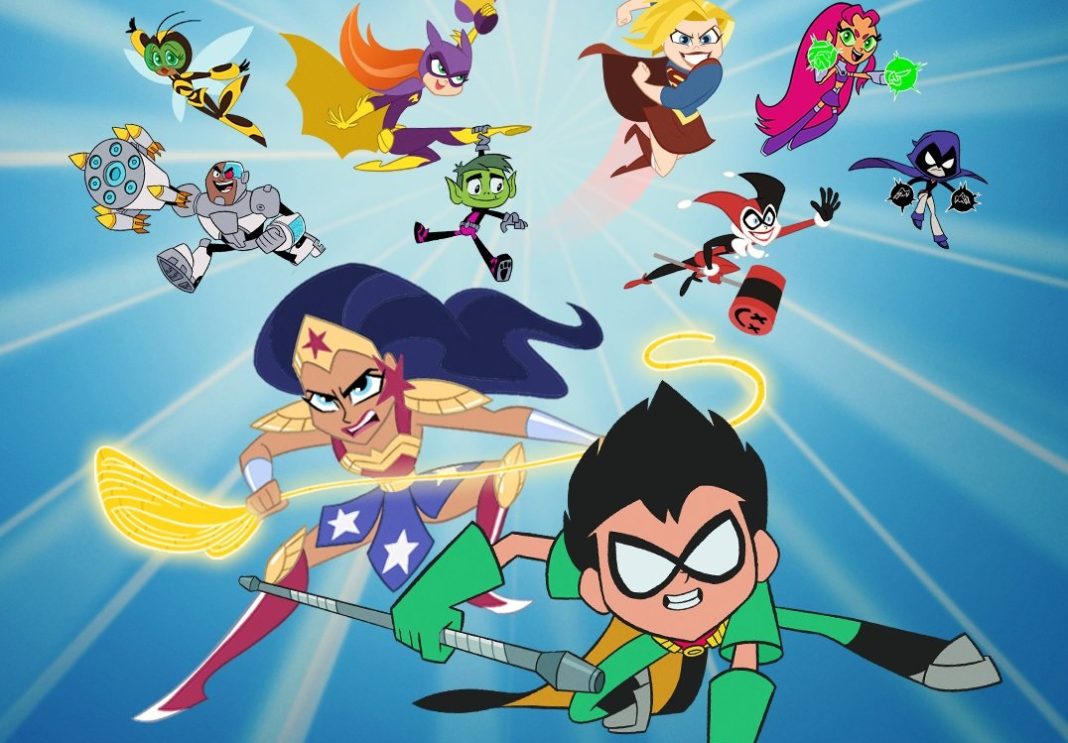







I have a four year old daughter who really loved the original DC Superhero Girls, which I thought was the whole point of the franchise. Getting young girls into superheroes. I think the new DCSHG is just really alienating. My kid just doesn’t like the new ones, and I see why. It’s too weird. It’s like Ren and Stimpy meets anime, which isn’t like DC Comics at all. From the art style to how they act, I just don’t understand why they would make so many of their characters that far removed from their comic roots. A real shame they had to change it so drastically. At least we still have to old ones to watch again and again.
Comments are closed.